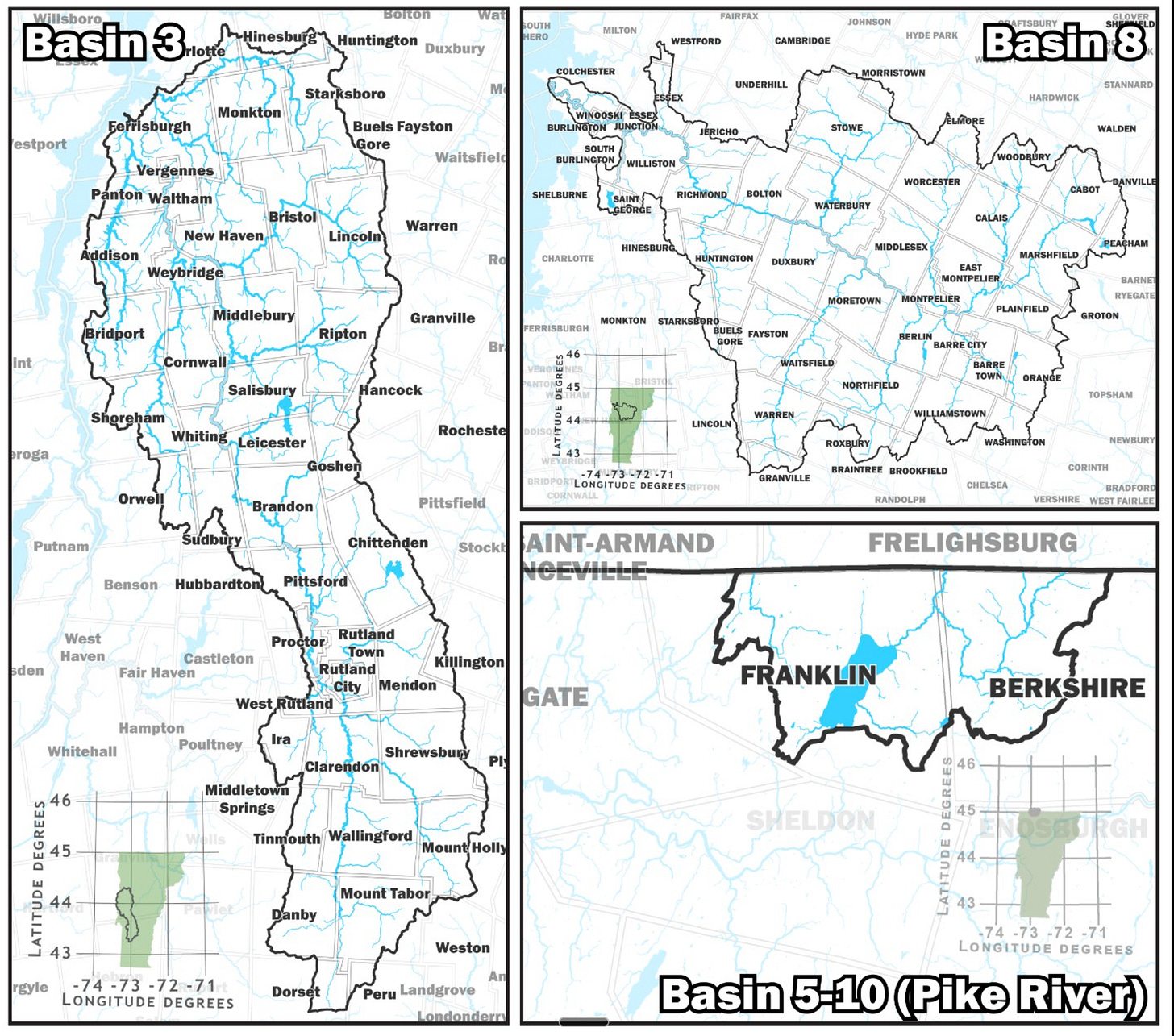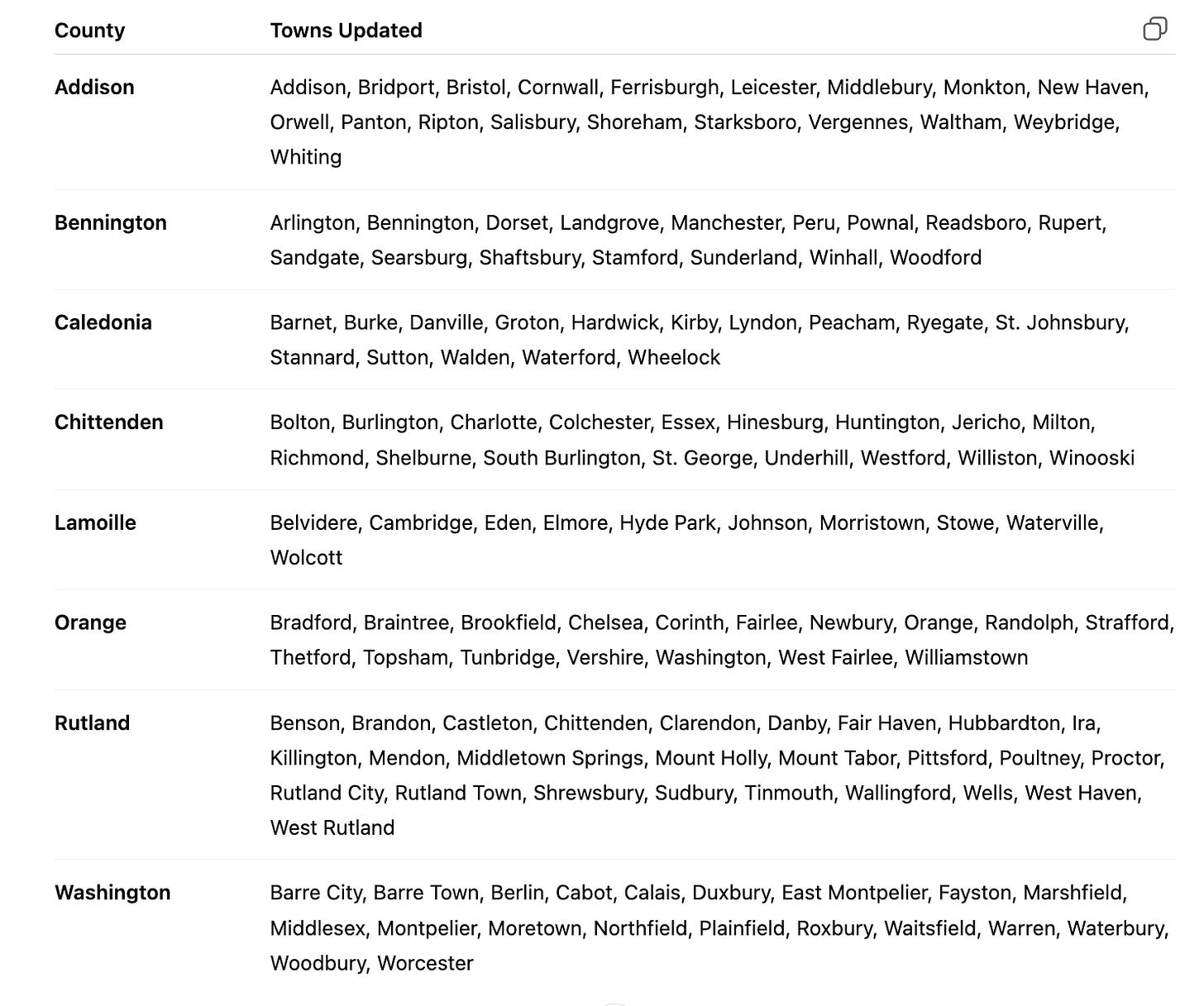Fresh Wetland Maps Out Now: How They Shape Vermont's Housing Outlook and Your Land
Has your property changed under the wetlands guidelines? Instructions are provided below.
A Major Update Across 107 Towns
The Vermont Department of Environmental Conservation (DEC) has released updated wetland maps covering 107 towns across Addison, Bennington, Caledonia, Chittenden, Lamoille, Orange, Rutland, and Washington counties. These maps are intended to be planning tools, helping municipalities, developers, and property owners identify wetlands before construction or purchase. According to the DEC, the updates make it easier to avoid harmful impacts on fragile wetland ecosystems while providing clearer guidance to those pursuing development.
Updated Counties and Towns
The wetland map update affects the following regions:
(Source: Vermont Department of Environmental Conservation)
Why Wetlands Matter in Housing Development
Wetlands are protected under state and federal law because they filter water, reduce flooding, and provide wildlife habitat. For housing developers and municipalities, wetlands can significantly affect where new construction can occur. A parcel that appears buildable at first glance may be partially—or even entirely—constrained by wetlands. The new maps, combined with the DEC’s Wetland Screening Tool, give developers early insight into whether additional permitting or project adjustments will be required.
Balancing Environmental Protection With Housing Needs
Vermont is in the midst of a housing crisis, with an estimated shortage of more than 30,000 homes statewide. Communities and state leaders have been pressing for policies to accelerate development, especially of affordable and workforce housing. At the same time, environmental advocates argue that protecting wetlands is crucial for climate resilience, especially as Vermont faces more frequent flooding.
The updated maps highlight the tension at the heart of Vermont’s planning system: encouraging new housing construction while preserving critical natural resources. According to housing advocates, clearer mapping may help avoid costly delays for developers who previously discovered wetland restrictions late in the permitting process. On the other hand, some developers caution that each new layer of environmental review adds complexity and cost, especially in already challenging markets.
Implications for Small Towns and Builders
For smaller towns, which often lack dedicated planning staff, the updated maps can serve as a first line of guidance. Instead of waiting until a project reaches Act 250 or local zoning review, a builder or homeowner can use the online tool to check whether wetlands are present on a site. This could save time, prevent disputes, and ensure early collaboration with state regulators.
However, it also means that some lots that might have been marketed as buildable could now be flagged with restrictions, reducing the available land base for new housing. In counties like Chittenden and Washington—already grappling with limited buildable land—the impact could be particularly noticeable.
A Tool, Not a Solution
While the new wetland maps represent a step forward in planning transparency, they are not a direct fix for Vermont’s housing crisis. They may help developers avoid missteps, but they also reinforce the reality that land suitable for housing in Vermont is limited and often subject to environmental constraints.
State leaders are continuing to look at other tools—such as zoning reform, infrastructure investment, and financial incentives for developers—to increase housing supply. The wetland maps will shape where that growth can realistically occur.
Sidebar: Here’s How to See if Your Property Has Changed Under the Wetlands Guidelines
Go to the DEC’s Wetland Screening Tool: Visit anrmaps.vermont.gov and select the Wetland Projects viewer.
Search for your property: You can type in an address, parcel ID, or zoom into your town.
Look for shaded areas: Wetlands will be marked with updated boundaries. If your land overlaps these areas, you may face restrictions on building.
Check before you buy or build: Even small projects like adding a driveway or outbuilding may require permits if wetlands are present.
Consult local and state officials: If wetlands appear on your property, contact your town zoning office or the DEC wetlands office for next steps.
Tip: Early checks can save thousands of dollars in redesigns, delays, or legal challenges down the line.




